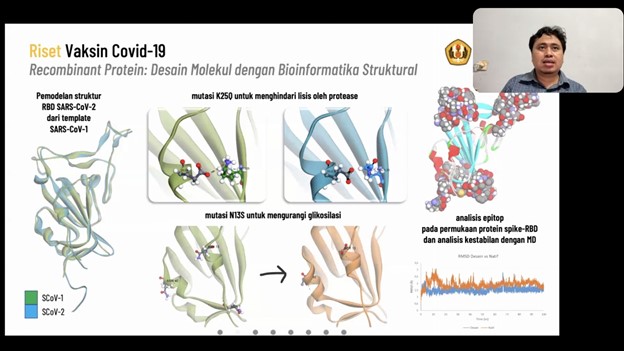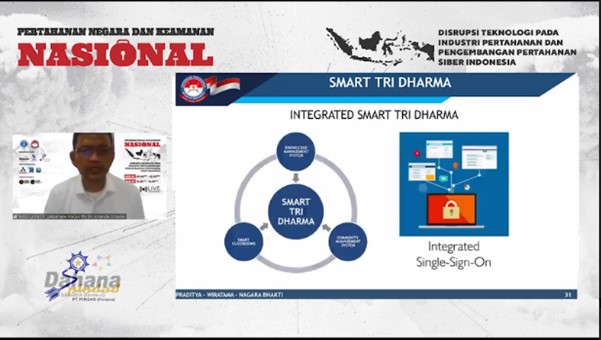The Application of Computational Biology in Diagnostic Product & Vaccine Development
By Adi Permana
Editor Adi Permana

BANDUNG, itb.ac.id–As time passes, science has been developing computational science to improve results obtained from experiments. The Microbiology study program of the School of Life Sciences and Technology of ITB (SITH ITB) held a guest lecture for the BM4203 Diagnostic Microbiology course on Wednesday (6/2/2022). The guest lecture invited Muhammad Yusuf, Ph.D., a lecturer from the Department of Chemistry of the Molecular Biotechnology Research Center from Padjadjaran University, as the speaker for the occasion.
Computational biology is the development of computational methods to resolve issues related to the field of biology. On the contrary, bioinformatics is the utilization or application of computational biology to analyze data that have been obtained from an experiment.
Yusuf explained that computational biology and bioinformatics are often misunderstood as a method to replace experiments. However, in actuality, both computational biology and bioinformatics are utilized to ease the process of interpreting experimental data.
Bioinformatics can be used in genomic surveillance; specifically, to monitor changes happening in a virus. Some changes in the characteristics of an organism can be observed directly (phenotype). This is possible due to the alterations occurring in the biological function, which are related to changes in the structure of enzymes caused by modifications in the genetic code. “It should be noted that not every mutation is always dangerous,” added Yusuf.
For example, viruses with RNA as their genetic material tend to mutate easily in which the mutation can actually weaken the virulence of the virus. Changes in the molecular level like this can be observed and simulated with the help of bioinformatics to identify the effects. Mutations within a virus will be potentially dangerous if they occur on the active side of the virus or if they enhance the interaction between the virus and the host cell.
Furthermore, bioinformatics can be utilized to optimize antibody adsorption of nanoparticles. Rapid test is one of the methods used in a diagnostic test. The principle of a rapid test is the interaction between the antigens, which originated from the virus, and the human antibody. This interaction can be affected by numerous factors such as pH that can have an effect on substance distribution.
“With computational biology, the electrostatic potential on the surface of antibodies can be calculated to determine the optimal pH for antigen bonding. This can be useful for developing a better diagnostic kit,” Yusuf explained.
Lastly, bioinformatics can be used to manufacture vaccines. The vaccine manufacturing process itself consists of exploratory stage, clinical trials, and regulatory approval. The exploratory stage involves basic laboratory research conducted by scientists in order to find the ingredients for the vaccine.
Nowadays, there are many protein- and RNA-based vaccines that have been successfully developed. In the past, vaccines were produced from weakened viruses which took a tremendously long amount of time to manufacture, even up to several years. The use of bioinformatics in vaccine manufacturing speeds up the whole process, especially in the exploratory stage.

Bioinformatics studies in diagnostic product and vaccine development involve a lot of modeling of molecular dynamics. The simulation used can apply external force to molecules so that it visualizes the expected interaction of a molecule naturally.
“Molecular simulation can be seen as a computational microscope. By looking at molecular dynamics, we can better understand the molecules”, described Yusuf. He then added, “Molecular modeling is a way to build ‘chemistry’ with your molecules.”
![]()
Reporter: Ghina Aulia (Microbiology, 2019)
Translator: Ariq Ramadhan Teruna (Faculty of Industrial Technology, 2021)

.jpg)
.jpg)
.jpg)
.jpg)
.jpg)


